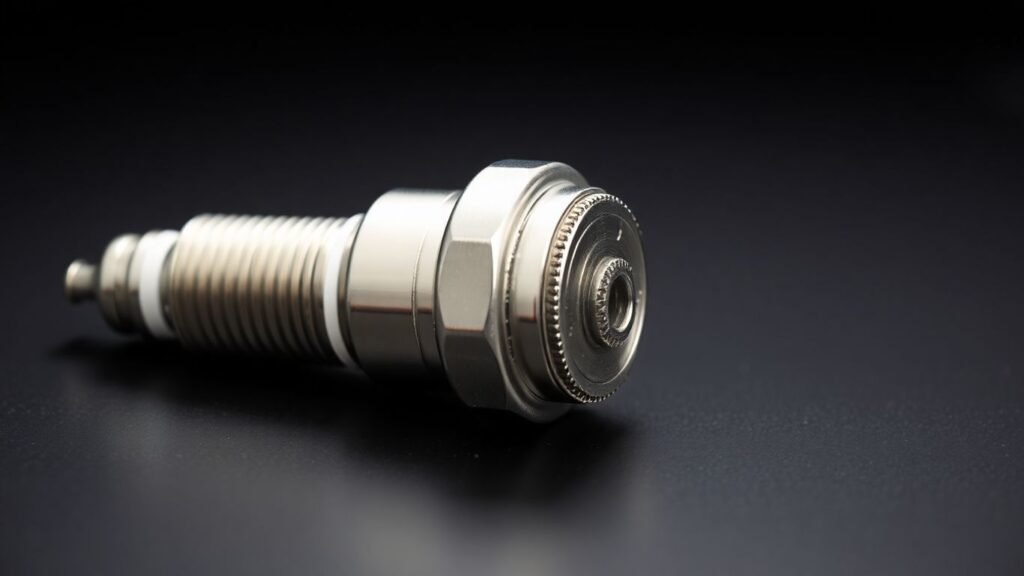You know, keeping up with car maintenance can feel like a chore. Sometimes it’s the little things, like a single part, that can make a huge difference. We’re going to look at how one specific part ended up saving a Mazda owner a whole lot of trouble. It’s a story about why sticking to the basics and keeping good records really matters.
Key Takeaways
- Regular maintenance is key for keeping your Mazda running well and safely.
- Using approved spare parts is important, especially if your car is still under warranty.
- Mazda has moved from paper service books to digital records to make tracking easier.
- A complete service history helps maintain your car’s warranty and can increase its resale value.
- Digital service platforms can simplify record-keeping for both owners and mechanics.
Understanding Mazda’s Service Requirements
Adhering to Scheduled Maintenance
Keeping your Mazda running smoothly means following its recommended service schedule. Mazda, like most car manufacturers, sets out specific intervals for maintenance, usually based on mileage or time. Think of it like regular check-ups for your car. These services are designed to catch small issues before they turn into big, expensive problems. Skipping these can lead to parts wearing out faster, affecting how your car drives and even its fuel efficiency. It’s not just about keeping it on the road; it’s about keeping it running the way it was meant to.
The Importance of Approved Spare Parts
When it comes to replacing parts during service, using ones that are approved by Mazda is a big deal. It’s not just about brand loyalty; these parts are made to fit your specific Mazda model and meet its performance standards. Using unapproved parts, even if they seem to fit, can sometimes cause issues down the line. This is especially important if your car is still under warranty. If a problem arises and it’s found that non-approved parts were used, Mazda might not cover the repair costs. It’s a bit like using the right kind of oil – the wrong type might work for a while, but it’s not ideal for the engine’s long-term health.
Sticking to the manufacturer’s guidelines for both service timing and the parts used is the best way to protect your investment and keep your Mazda performing at its best.
The Evolution of Mazda Service Records
From Paper Books to Digital Records
Remember those little paper booklets that came with your car? For years, that’s how Mazda owners kept track of their vehicle’s service history. Every oil change, tire rotation, or brake check got a stamp or a handwritten note. It worked, mostly, but it wasn’t exactly foolproof. Lose the book, and your car’s service history could be lost with it. Plus, trying to piece together a full record from scattered invoices wasn’t always easy, especially if you used different mechanics over the years.
Keeping track of maintenance used to be a physical task, often relying on a single booklet that could easily be misplaced.
Mazda’s Digital Service Book Initiative
Mazda recognized this shift and started moving towards a more modern approach. Back in 2005, they were actually one of the first car brands to introduce a digital service record system. This meant that service information was being stored electronically, often on a central server. For newer Mazdas, especially those sold after mid-2006, this digital record became the standard way to log maintenance. Even older models could often be added to this system by an authorized workshop. This move was a big step towards making service history more reliable and accessible. It aimed to solve the problems of lost paper books and incomplete records, making it easier for both owners and mechanics to see the car’s maintenance past.
Why Service History Matters for Mazda Owners
Keeping track of your Mazda’s service history isn’t just about following rules; it actually makes a big difference for you as an owner. It’s like having a report card for your car, showing how well it’s been looked after.
Maintaining Warranty Validity
When you buy a new Mazda, it comes with a warranty, which is great peace of mind. But to keep that warranty active, you absolutely have to follow the recommended service schedule. If something goes wrong and it’s covered by the warranty, Mazda will want to see proof that you’ve been taking care of the car. This means showing them that regular check-ups and any necessary repairs were done correctly, using the right parts. Without this record, they might deny your warranty claim, leaving you to pay for repairs that should have been covered.
Ensuring Optimal Vehicle Performance
Regular servicing is key to keeping your Mazda running smoothly. Think about it: oil changes, filter replacements, checking fluid levels – these things prevent wear and tear. A car that’s consistently serviced will generally perform better. It’s more likely to be fuel-efficient, brakes will work as they should, and the engine will run cleaner. Skipping services can lead to small issues becoming big, expensive problems down the line, affecting how your car drives and how long it lasts.
Boosting Resale Value
When it’s time to sell your Mazda, a complete service history is a huge selling point. Buyers want to know they’re getting a car that’s been well-maintained. A documented history shows that the car hasn’t been neglected and that the mileage shown is likely accurate. This can make your car more attractive to potential buyers and often means you can ask for a higher price. It’s a tangible way to prove your car’s worth.
A car’s service record is more than just a collection of dates and stamps; it’s a testament to its care and a predictor of its future reliability. For owners, it’s a tool that protects their investment and ensures their driving experience remains positive.
How One Spare Part Saved a Customer’s Mazda
The Critical Component Identified
It started with a strange noise, a sort of grinding sound that seemed to come from the engine bay. Sarah, a long-time Mazda owner, initially dismissed it as something minor. However, the sound persisted and grew louder over the next few days. She decided it was time to get it checked out. After a thorough inspection at her local garage, the mechanic pinpointed the issue: a worn-out timing belt tensioner. This small, often overlooked part plays a big role in keeping the engine running smoothly. Without it functioning correctly, the timing belt could slip, leading to serious engine damage.
The Impact of a Single Replacement
Replacing the timing belt tensioner was a relatively straightforward fix. The mechanic confirmed that using an approved, high-quality spare part was important for the longevity of the repair. Once the new tensioner was installed and the timing belt properly adjusted, the grinding noise vanished. Sarah was relieved. The car felt smoother, and she could tell the engine was happier. It was a stark reminder of how one small part can make a huge difference in a car’s performance and overall health.
Preventing Further Damage and Downtime
Sarah’s story highlights the importance of addressing even seemingly minor issues promptly. Had she ignored the grinding noise, the worn tensioner could have led to the timing belt jumping a tooth or even breaking. This would have resulted in catastrophic engine failure, requiring extensive and costly repairs, not to mention significant downtime. The quick replacement of the tensioner not only fixed the immediate problem but also acted as a preventative measure, saving Sarah from much larger headaches down the road. It’s a good lesson for all car owners: pay attention to those warning signs your car gives you.
Streamlining Service Records with Digital Solutions

Advantages for Car Owners
Keeping track of your Mazda’s service history used to mean a lot of paper – stamps in a book, piles of invoices. It was easy to lose track, or worse, lose the actual service book. Now, digital solutions are changing all that. Having your car’s entire service history accessible from your phone or computer makes life so much simpler. You can easily add past services, even from old paper books or scattered receipts, all into one place. This not only helps you remember when the next service is due but also provides solid proof of maintenance, which is great if you ever need to make a warranty claim or when it’s time to sell.
Benefits for Automotive Workshops
For mechanics and workshops, digital systems mean less paperwork and faster record-keeping. Instead of manually entering data or dealing with different formats from various car brands, a unified digital platform can integrate with existing workshop software. This speeds up the process of logging a service and reduces errors. It also means they can easily access a car’s past work, helping them diagnose issues more accurately and provide better service to their customers. Think about how much time is saved when you don’t have to hunt for old records or re-enter information that’s already somewhere else.
Centralized Service History Management
Imagine a world where all your car’s maintenance records, regardless of the workshop or the year the car was made, are in one secure, easily accessible location. That’s the promise of centralized digital service history management. It moves beyond just one manufacturer’s system to create a universal record. This makes it incredibly easy for owners to manage multiple vehicles and for potential buyers to verify a car’s history. It’s a move towards transparency and efficiency in car maintenance.
The shift from paper to digital service records isn’t just about convenience; it’s about creating a reliable and verifiable history for your vehicle. This digital trail helps maintain the car’s value and can prevent issues down the line, like odometer fraud, by providing a clear timeline of its life.
Choosing the Right Service Documentation

Digital Servicebook: A Comprehensive Platform
So, you’ve got your Mazda serviced, and now you need to make sure it’s properly documented. For a long time, this meant a physical book with stamps, or maybe just a pile of paper receipts. Mazda actually got ahead of the curve back in 2005 with their own digital service record system. It was a big step away from the old paper books, which could easily get lost or forgotten. All new Mazdas sold after mid-2006 were set up to use this system automatically.
But here’s the thing: Mazda’s system isn’t the only game in town. There are other ways to keep your service history organized, and honestly, some are just easier for everyone involved. Think about it – no more digging through old invoices or trying to remember which workshop did what. A good digital platform puts all that information in one place, accessible whenever you need it, whether you’re on your computer or using a phone app.
Accessing and Uploading Service History
Keeping track of your car’s service history is pretty important, not just for your own peace of mind but also if you ever need to make a warranty claim. It shows you’ve kept up with the recommended maintenance, which is exactly what Mazda wants to see. Plus, a well-documented service history can really help when it’s time to sell your car. Buyers like knowing the car has been looked after properly, and it can even help prevent issues like odometer fraud.
Here’s a quick look at what a good digital system can offer:
| Feature | Benefit |
|---|---|
| Centralized History | All service records in one accessible place |
| Easy Uploads | Add photos or documents directly |
| Reminders | Get notified about upcoming service |
| Fraud Prevention | Helps verify mileage and maintenance |
It’s not just about having a record; it’s about having a clear, verifiable history that benefits both you as the owner and any future buyer. This kind of documentation makes the whole process smoother and builds trust.
The Takeaway: Keeping Your Mazda Rolling
So, it turns out that a single, seemingly small part can make a huge difference in keeping your car on the road. For this Mazda owner, it was a lifesaver. But it also highlights how important regular check-ups and keeping good records are. Whether you use Mazda’s digital system or another service, making sure your car’s history is logged properly helps when you need it most, and frankly, it just gives you peace of mind. It’s a good reminder that taking care of your car, even the little things, really pays off in the long run.








